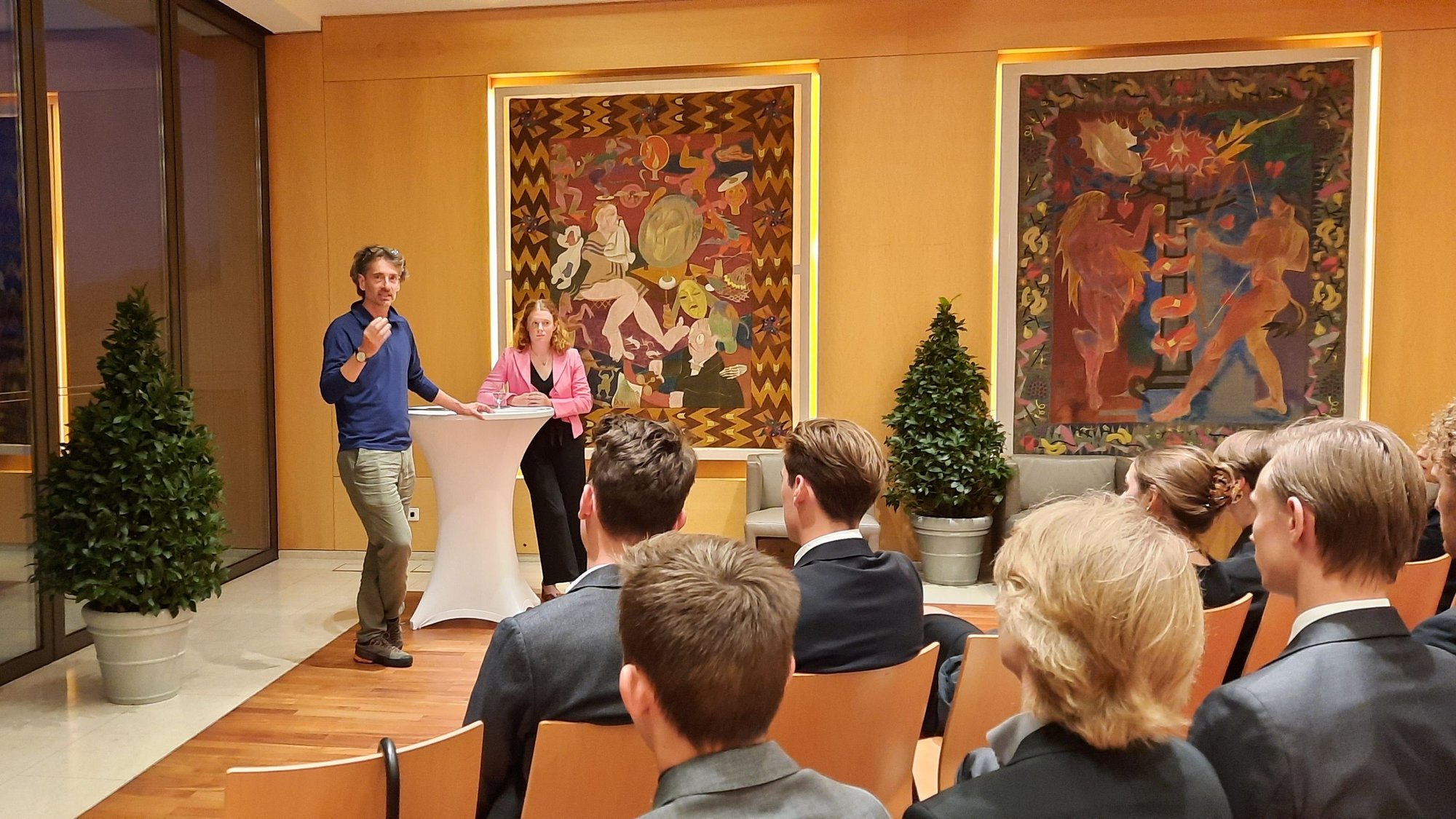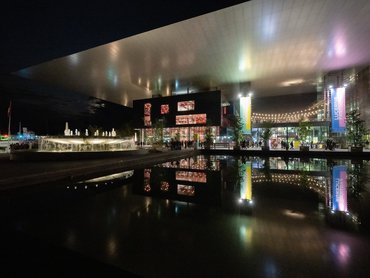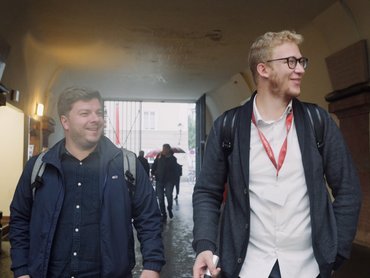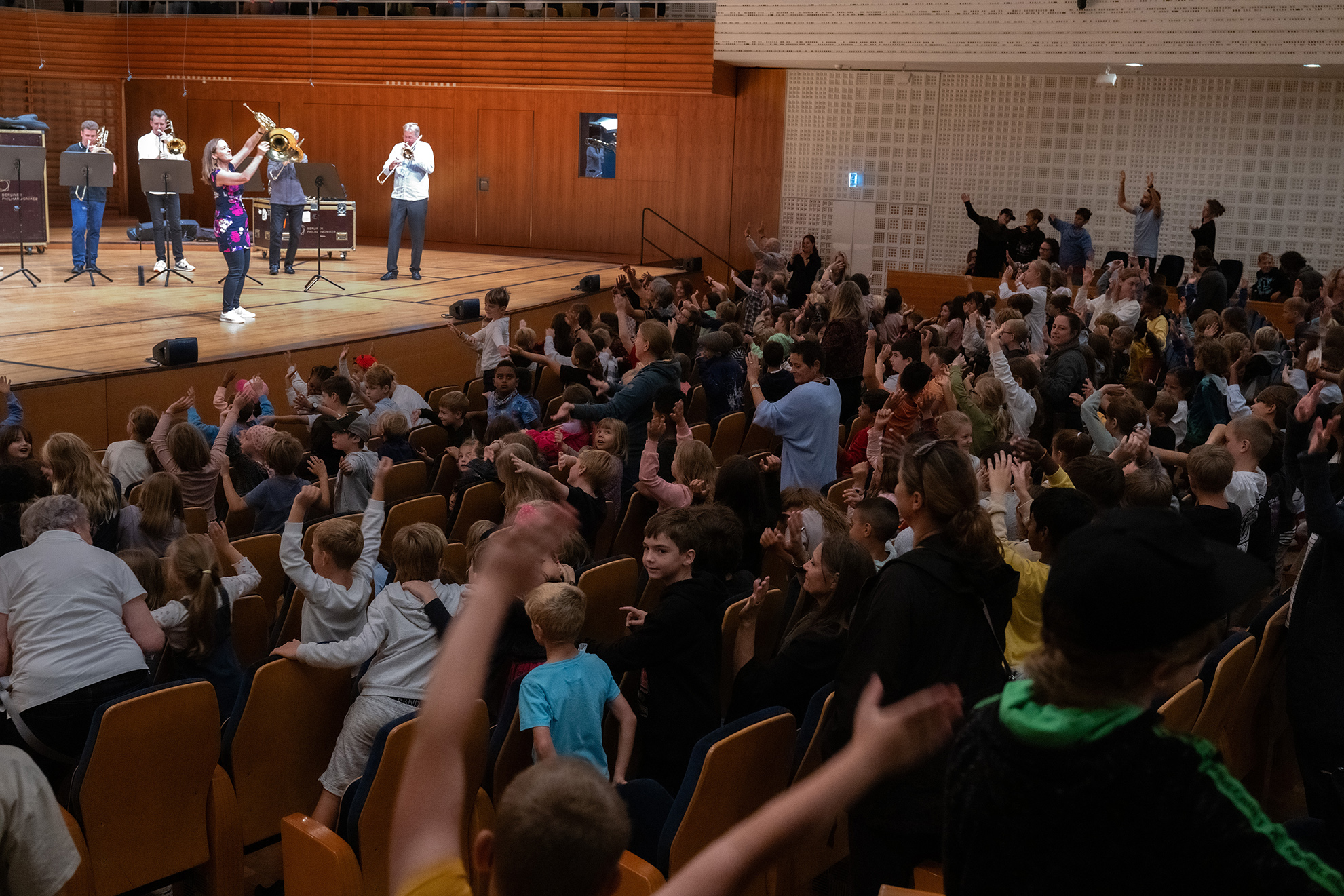
Three stories
Thunderous applause, standing ovations, loud cheers: few other occasions offer Berliner Philharmoniker musicians a more deafening reception than school concerts. Of course, that's not the only reason for the orchestra to include such projects in its touring schedule.
Music education has been part of the musicians’ identity for many years – both at home in Berlin and on tour. During this year’s festival tour, members of the orchestra presented introductions for young adults, a school concert at the Culture and Congress Centre in Lucerne, and spontaneously stood in for a musician who was unable to give a school concert. A report in reverse chronological order.
The Berliner Philharmoniker to the rescue
On the way from Salzburg to Lucerne, the head of the artistic operations office of the Berliner Philharmoniker received a call from a colleague at the Lucerne Festival: the pianist who was supposed to perform at a planned school concert couldn't make it. Was there someone from the orchestra who could take over? The education department of the Berliner Philharmoniker stepped in and struck gold. A total of six musicians came to the rescue, and spontaneously visited the Kantonsschule Reussbühl.
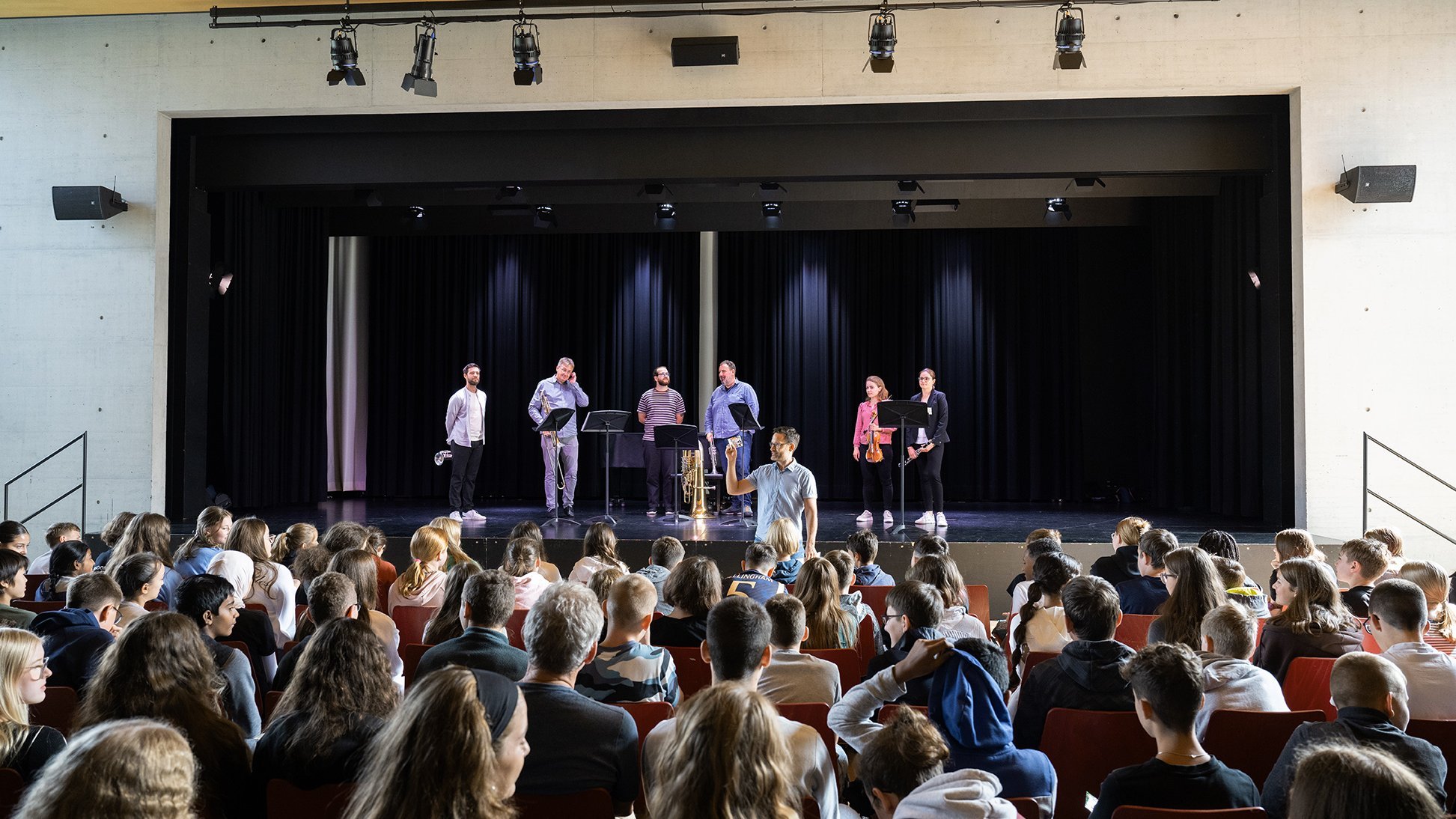
Guillaume Jehl, Bertold Stecher (both trumpet), Olaf Ott (trombone), Elias Samuel Rodehorst (tuba), Paula Borggrefe (violin), and Sophie Pardatscher (clarinet) presented themselves and their instruments to 150 year 8 students. Rodenhorst, Borggrefe and Paradatscher currently hold scholarships at the Karajan Academy. And to cap it all off, the Berliner Philharmoniker's head of press joined the group as presenter.
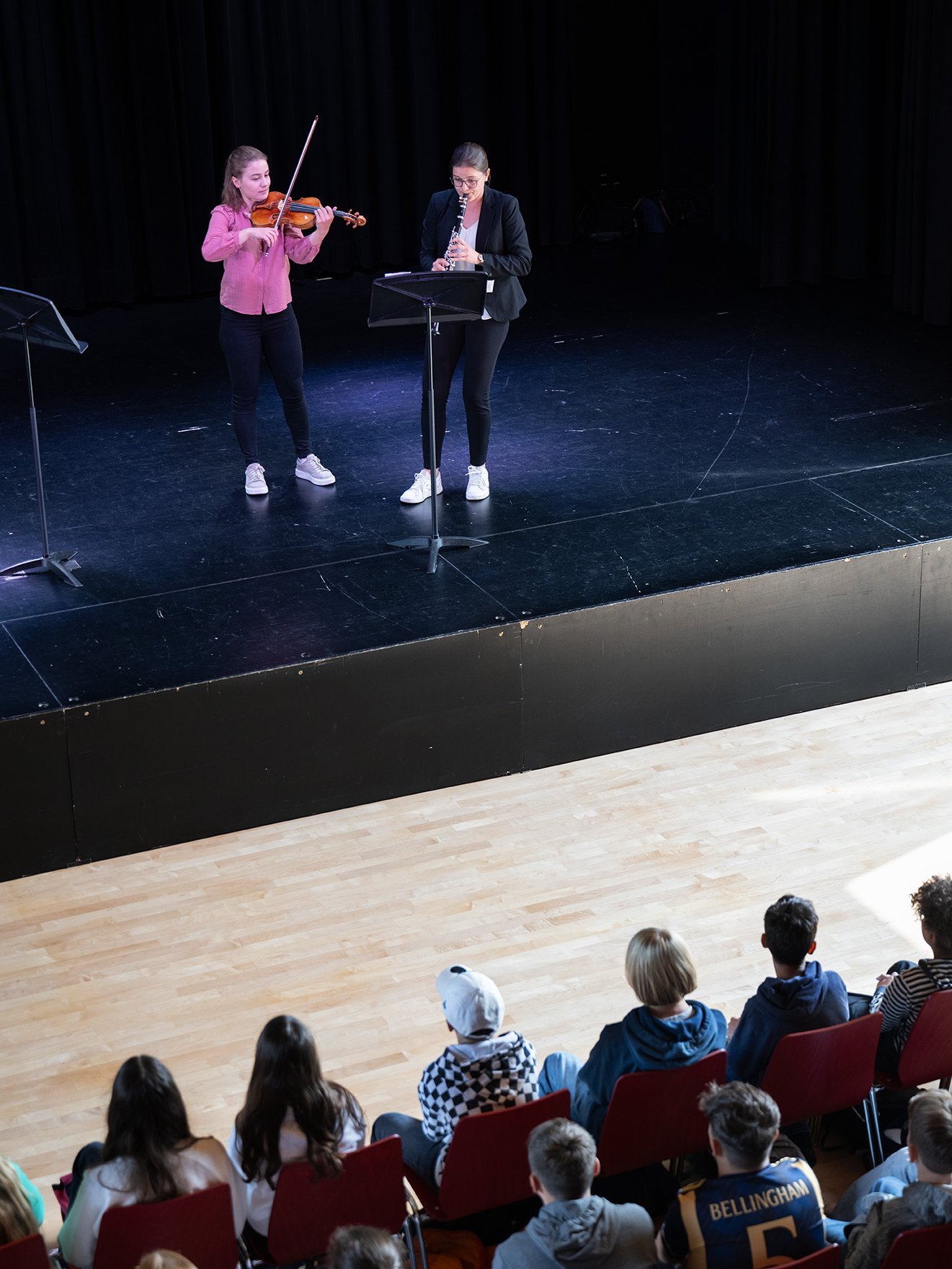
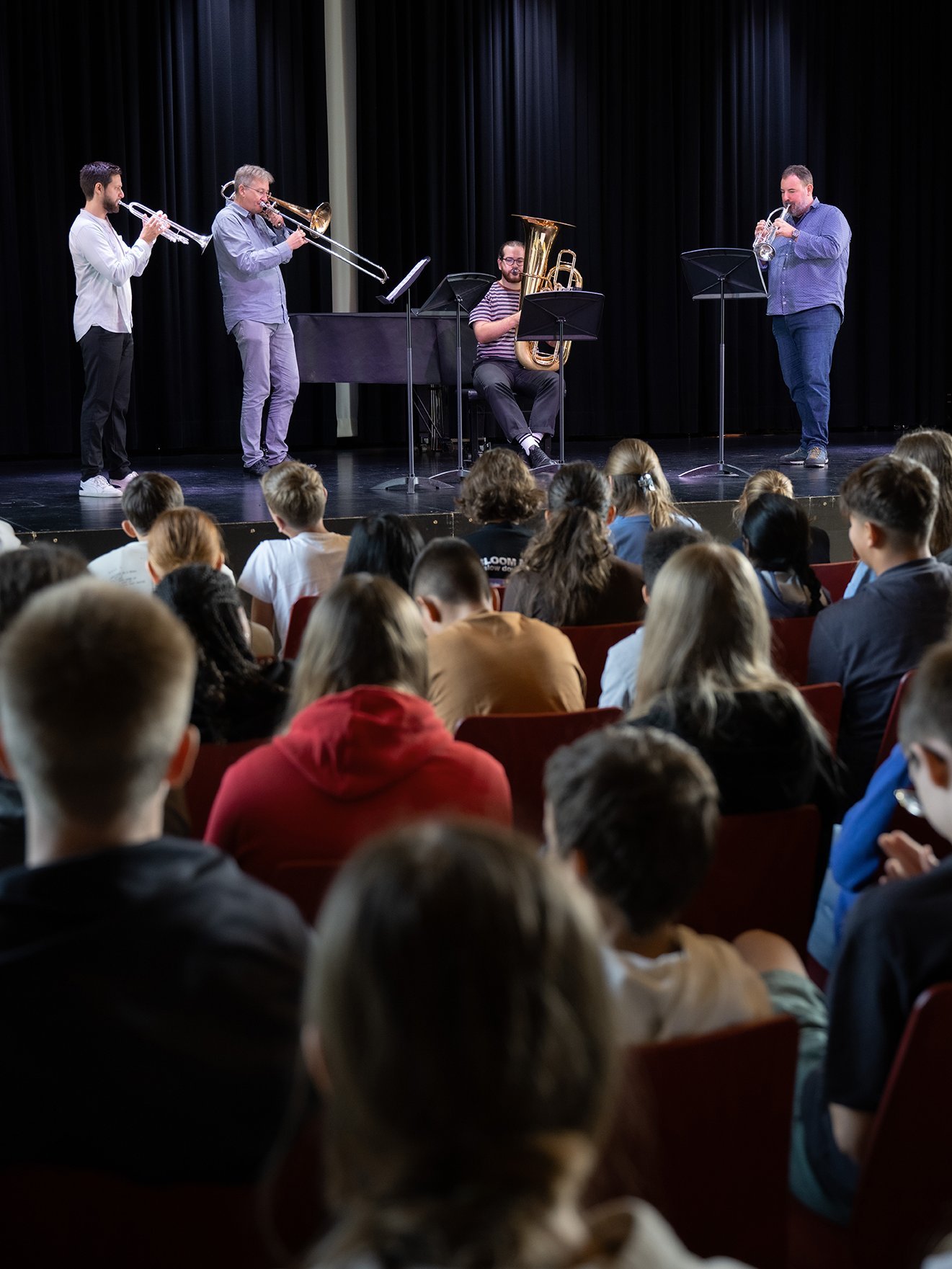
The students were impressed by how many different countries the orchestra's members come from. And they were invited to guess which nation was the second most represented after the Germany (answer: Switzerland!) Of course, music was also played, and the pupils were invited to ask questions.
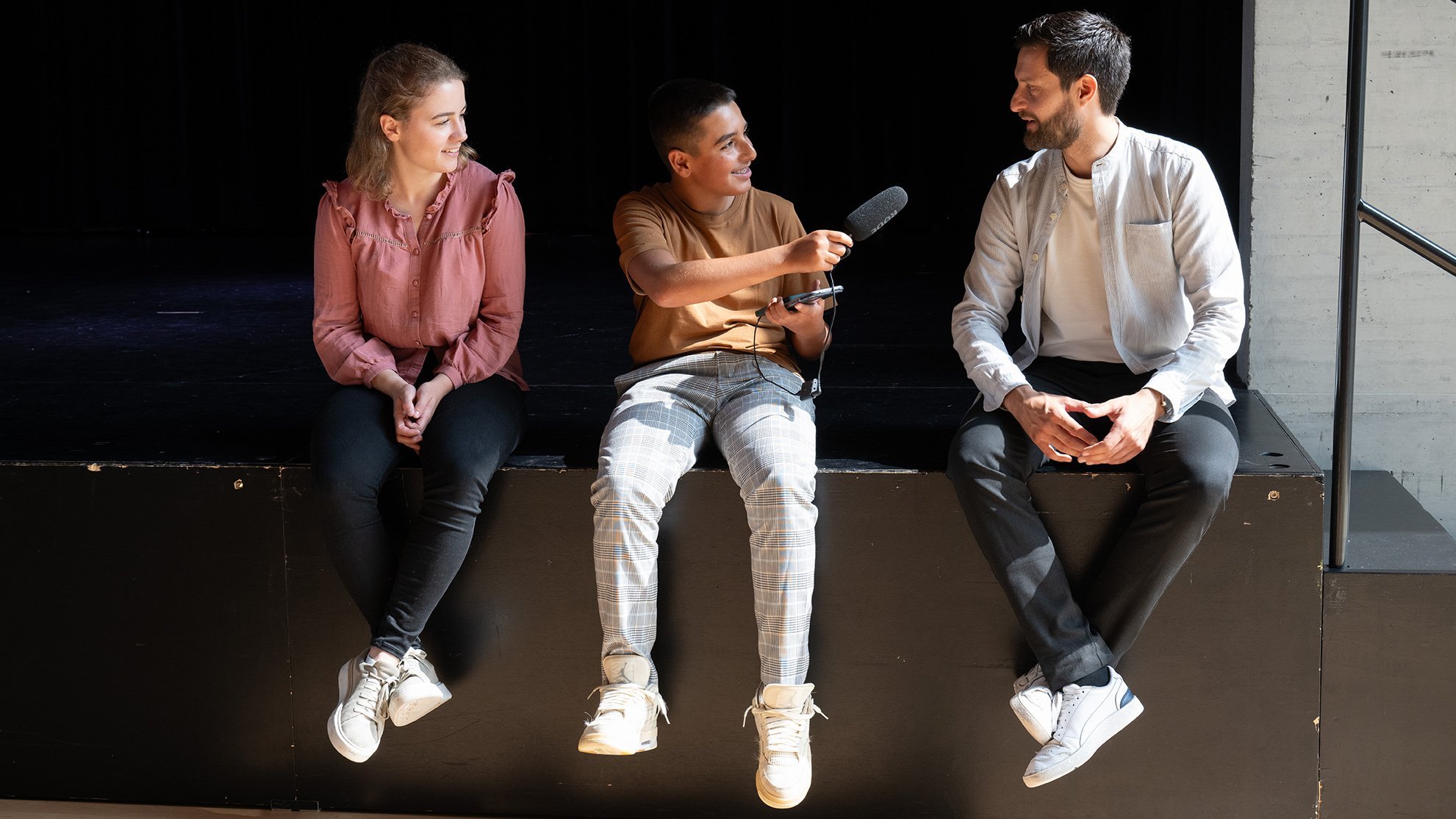
After the concert, Bertold Stecher and Paula Borggrefe answered questions for the students’ podcast. Bertold Stecher explained how he came to the Berliner Philharmoniker and why he didn't become a professional ski racer.
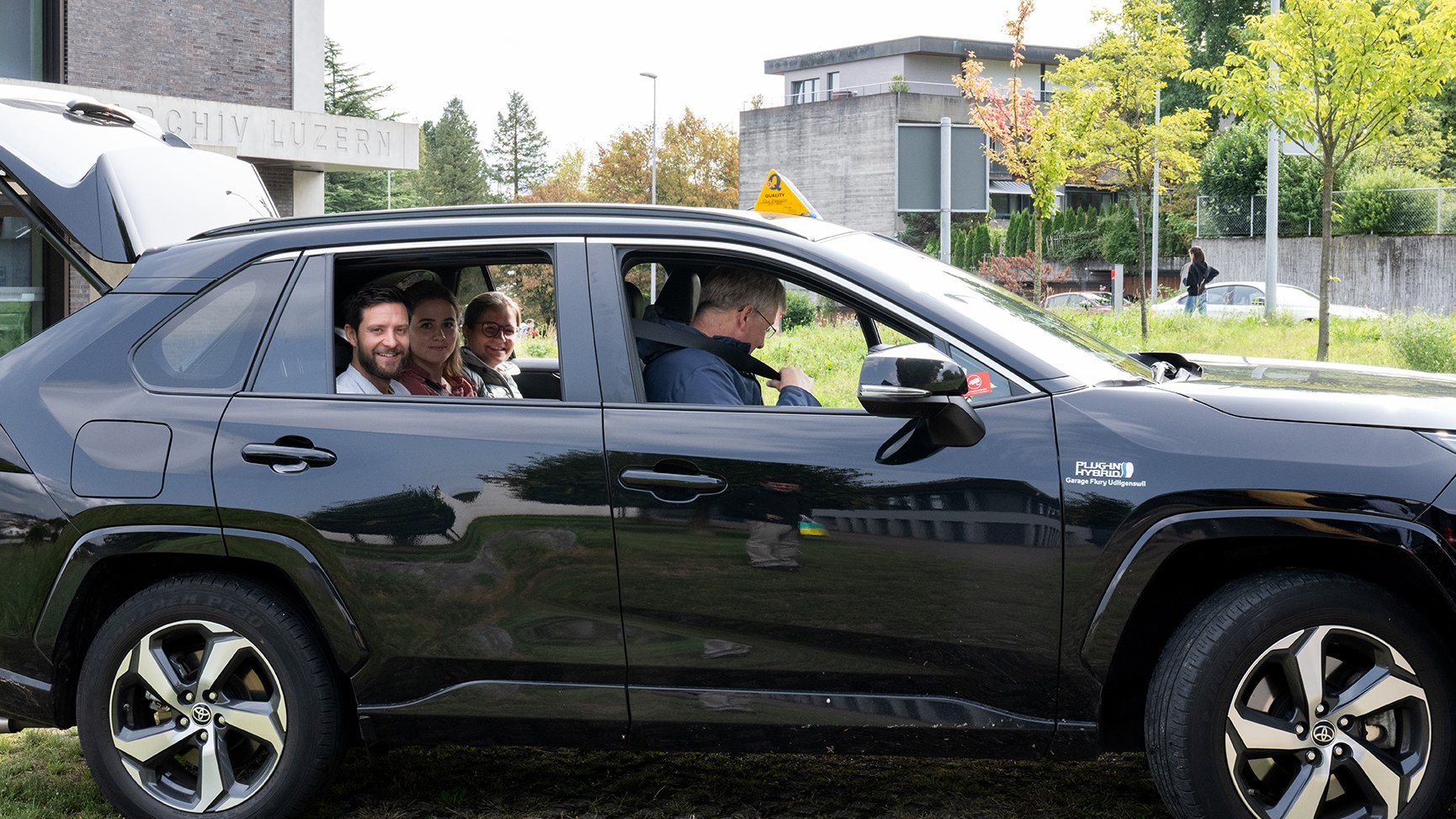
Then everyone piled into the car and headed back to Lucerne. The next day, there was another school concert. This had been planned for a long time, but it would be a lot louder.
From garden hoses to elephant digestion
Horn player Sarah Willis is well-known to the students of Lucerne. She had hosted a school concert last year, and even recognised some of the children sitting the front row. This time, however, rather than percussionists, she brought the brass section of the Berliner Philharmoniker. They deserve to be received like the real pop stars that they are, and the children were asked to greet them accordingly. It worked - the musicians were greeted with thunderous applause.
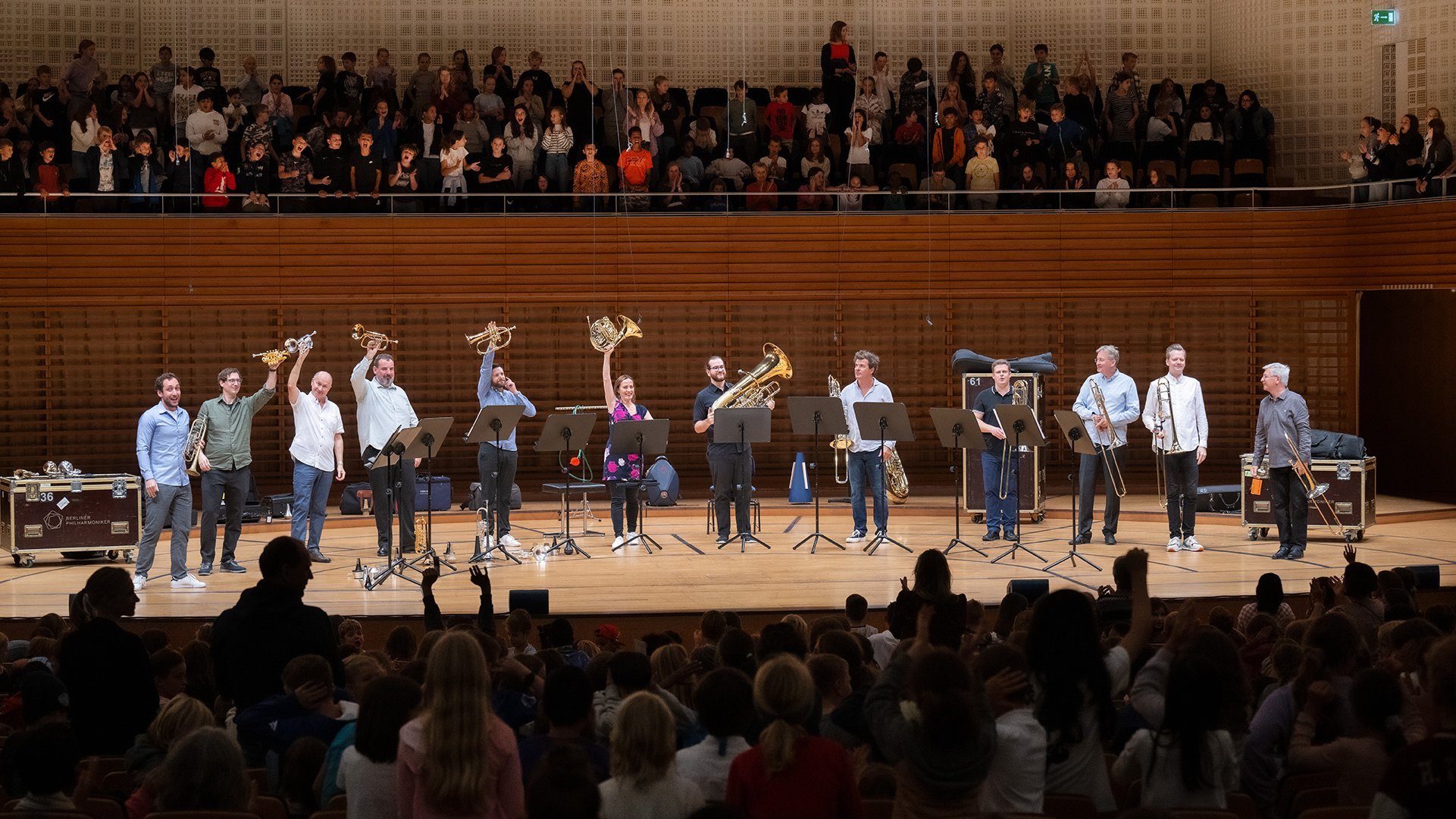
Some of the musicians had taken part in the school concert the day before. The complete line-up: Guillaume Jehl, Andre Schoch, Bertold Stecher, Tamás Velenczei (trumpet) as well as temporary trumpeters Sebastian Berner, Sarah Willis (horn), Elias Samuel Rodehorst (tuba), Christhard Gössling, Olaf Ott, Jesper Busk Sørensen, Thomas Leyendecker (trombone), Stefan Schulz (bass trombone).
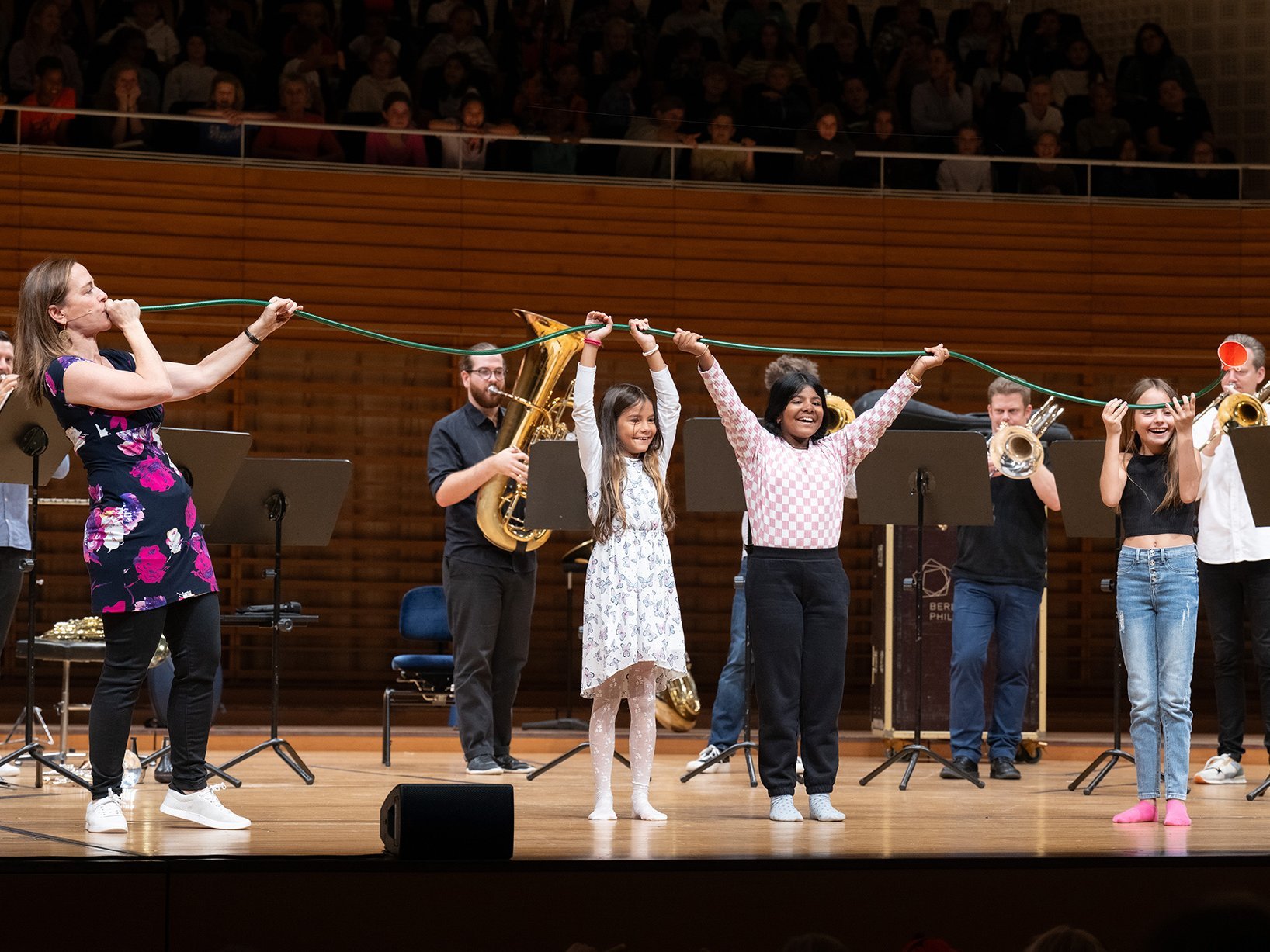
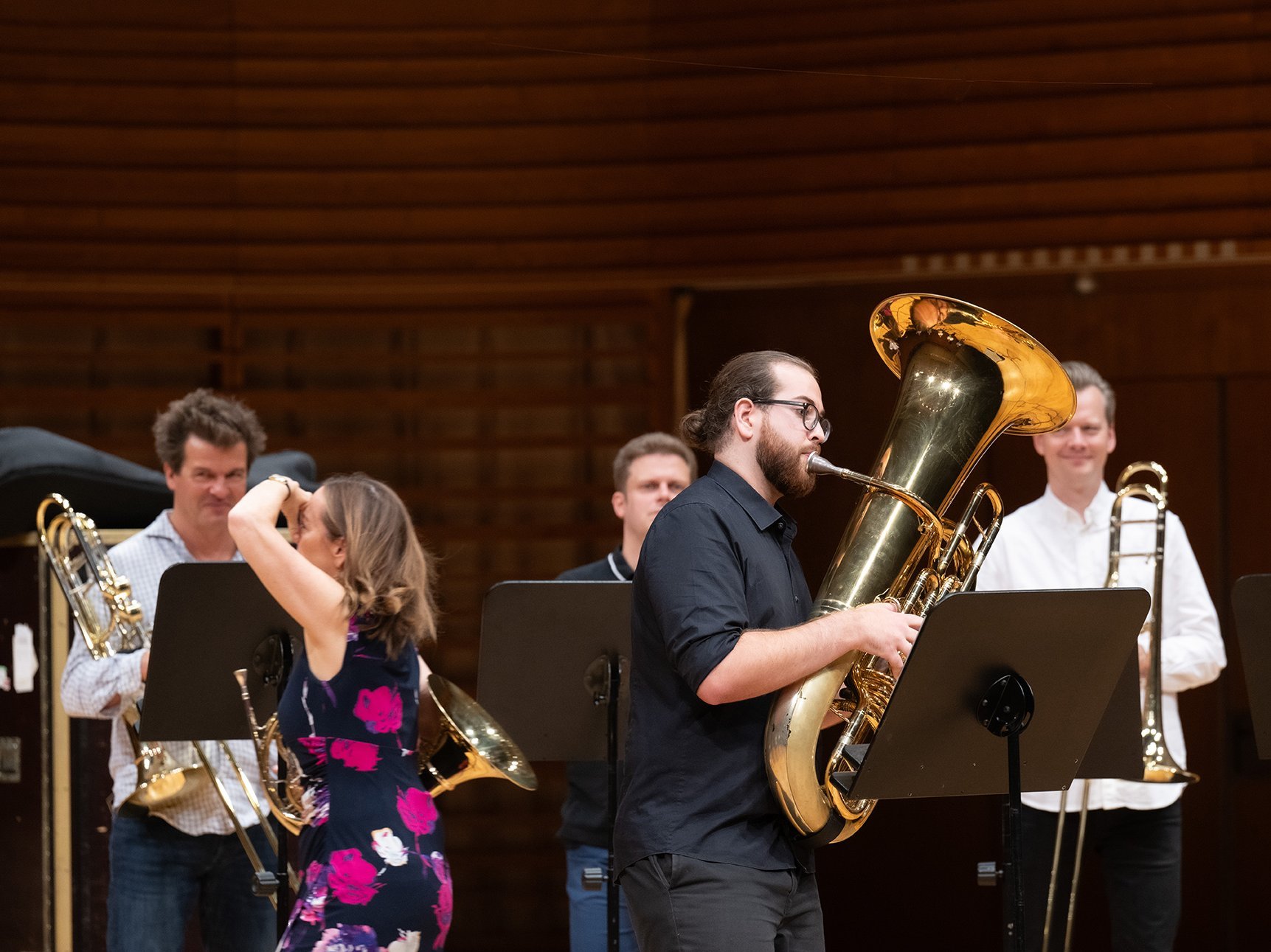
Sarah Willis introduced the different instruments, showing a special fondness for her own: the horn. With the help of a garden hose, she demonstrated how long a horn would be if you were to completely unwind it – and that she can also play Mozart on a hose. The tuba was then presented in more detail. Not only is it some 20 times heavier than a trumpet, but also, as Sarah Willis explained, it can sound like elephant flatulence. The children were delighted!
Towards the end of the concert there was a vote: which is the coolest brass instrument? The trumpeters had no doubt as to the right answer. In the end, however, everyone was applauded equally. To the strains of horse march (which had been loudly demanded as an encore), the students left the hall, dancing and stomping as they went.
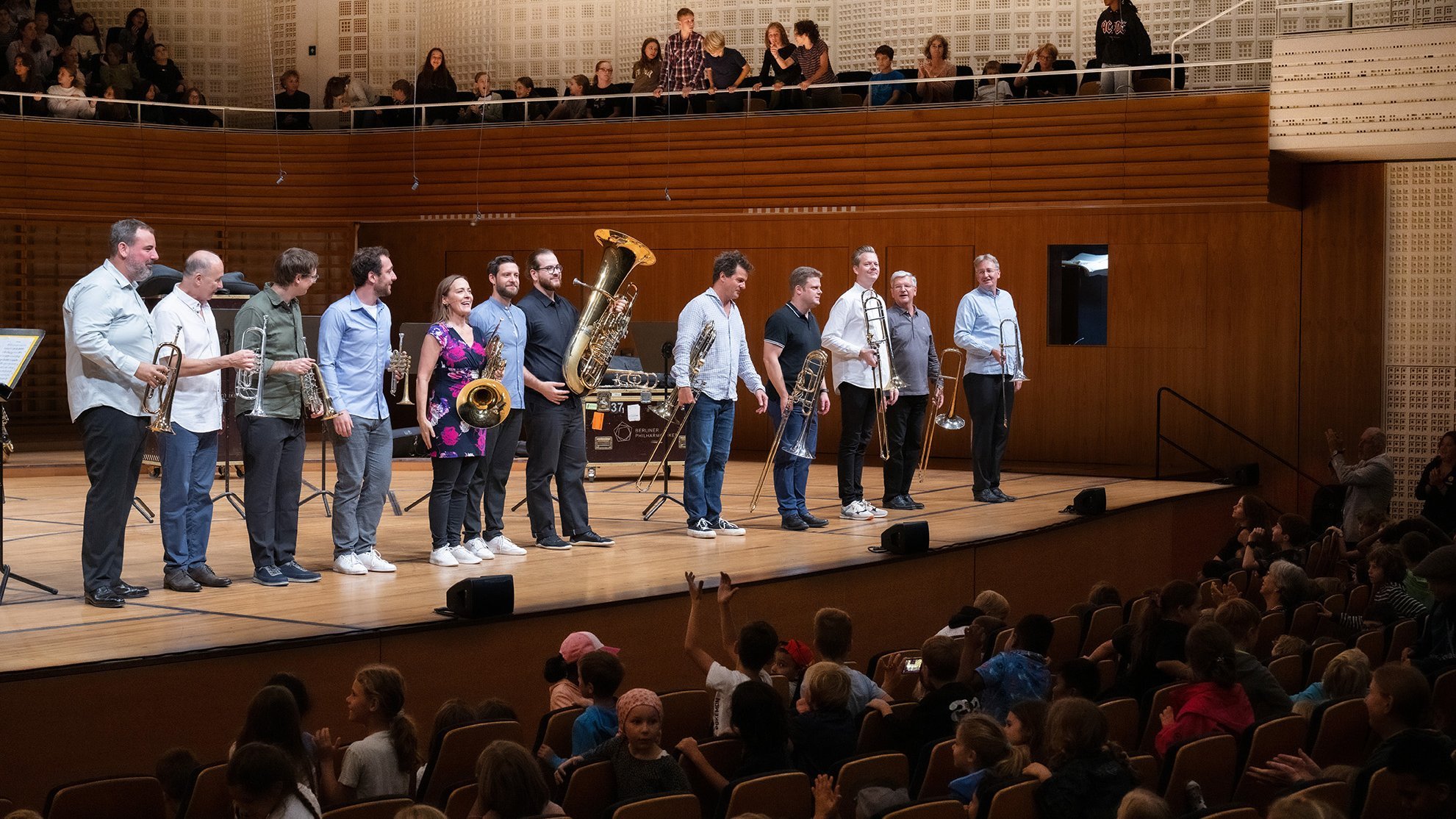
Introduction for Young Adults
Some days earlier, things in Salzburg had been somewhat less raucous. Percussionist Raphael Haeger was asked to give an introduction, and explained the challenges of a set of variations to the young audience. On this evening’s programme were Arnold Schoenberg’s Variations for Orchestra op. 31 and Johannes Brahms’ Variations on a Theme by Joseph Haydn. Well prepared, the young adults then went into the concert – this time without marching music.
